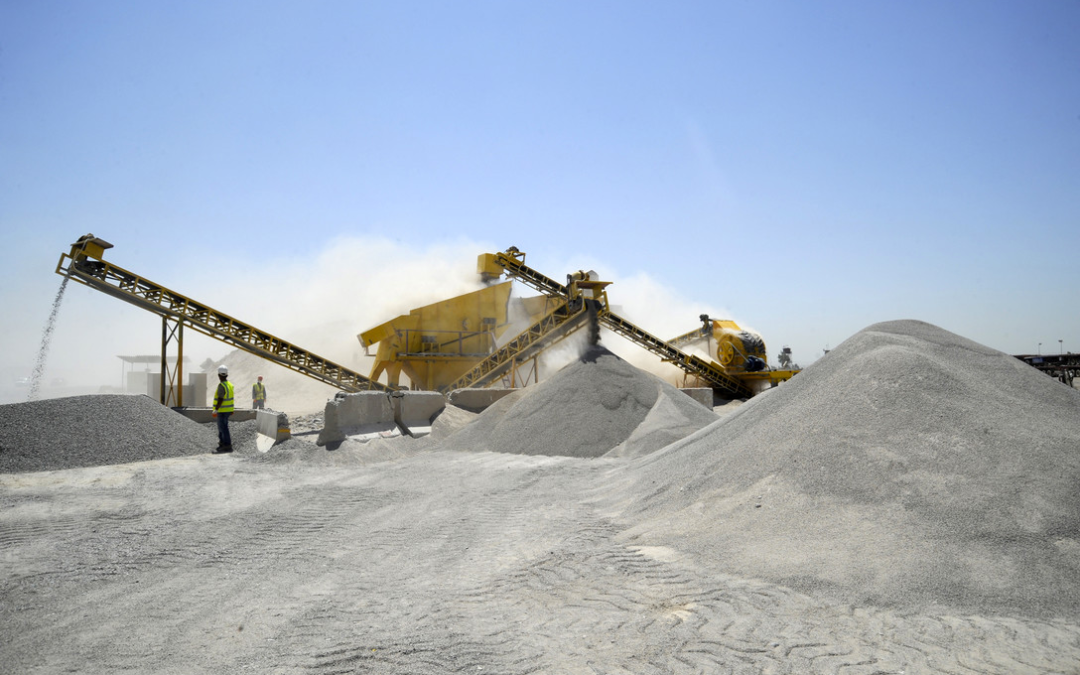The average American produces just shy of four and a half pounds of waste per day, and recycles just over a pound and a half of that. That sounds like a lot (and it is — we produce three times more waste per capita than anyone else). But the 254 million tons of waste we produce annually pales in comparison to the 569 million tons of construction and demolition waste generated by construction and demolition at the same time. Where is all of this waste coming from? Equally to the point, where’s it going? Our own experience providing aggregate recycling services in Omaha led Valley Corporation to take a closer look.
Where Construction Waste Comes From
Construction and demolition (C&D) waste isn’t evenly distributed. Only about ten percent of waste comes from construction, which makes sense; ordering too much of something wastes money, and requires storage space if it’s not being used immediately, so there are incentives to keep waste to a minimum.
Of course, that means that 90% of C&D waste comes from demolition. The sources of waste are diverse, including concrete, steel, wood, drywall, tile, shingles, and pavement, alongside other materials (like fill dirt, trees, and other biomass) that we wouldn’t normally think to file under “construction materials,” but which nevertheless are part of the demolition process.
Where Construction Waste Goes
In 2015, the most recent year for which data is available, the EPA estimates that a little more than two-thirds of construction material is reused or recycled at the end of its service life. The disposition of the material in question depends on the diligence of the contractor, the quality of the materials, and the options available for that material.
So, for instance, wood is repurposed as compost, mulch, or fuel, and can also be recycled for use in consumer products. Drywall can be recycled into more drywall, reused as a component in Portland cement, or diverted for consumer products. Asphalt pavement can be reincorporated into new pavement, or diverted for consumer products. And concrete finds use in manufactured products, but the bulk is repurposed as aggregate.
The Benefits of Recycled Construction Materials
Two-thirds sounds like a significant amount until you stop to consider that the remaining third of C&D waste that goes to landfills still amounts to hundreds of millions of tons. Clearly, we need to do more — and Valley Corporation is doing our part. Here’s why:
Environmental Savings
The processes required to obtain virgin materials for concrete, asphalt, steel, or any other construction material are often environmentally destructive. Recycling reduces that need, and with it, the environmental footprint.
Energy Savings
New materials aren’t just resource-intensive. Generally speaking, recycling processes use less energy than the creation of new material as well.
Conservation
Landfill space is at a premium, and as old sites fill up, new ones need to be found. That means finding and converting open spaces, often at a cost premium, simply to get rid of more waste — increasing pollution, and increasing disposal fees as well.
Cost Savings
Of course, this leads to a logical conclusion: if you’re not spending to extract new materials, not using as much energy, and not paying high disposal fees, you’re saving money. That, in turn, preserves profit margins for contractors, and helps customers who are keeping a wary eye on their ROI as well.
Green Certifications
If you’re aiming for a LEED certification, the use of recycled materials is a key component alongside other steps that ensure energy savings and environmental sustainability.
Aggregate Recycling Near Me
For Valley Corporation, C&D recycling is second nature. Our mobile aggregate recycling services are a natural outgrowth of our demolition and construction work, and we’re happy to partner with other contractors to assist with aggregate recycling, deliveries, and more.

